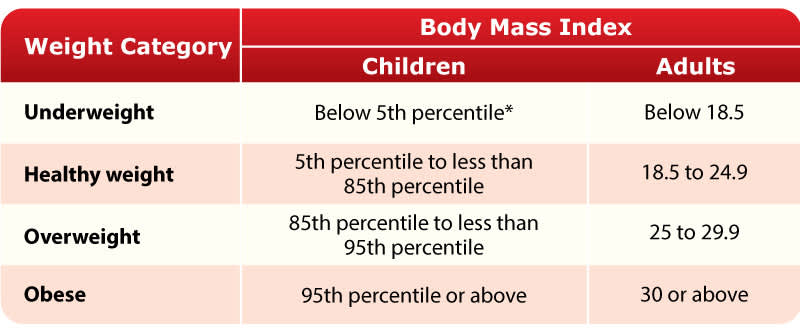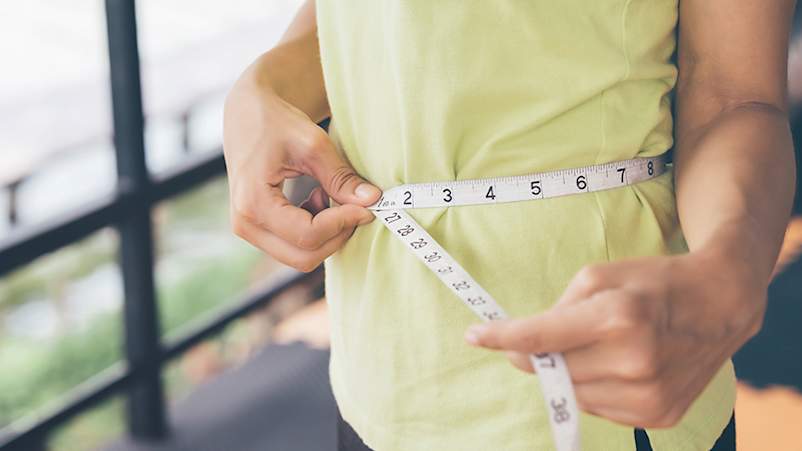We are all obsessed with our weight. And we all typically use different ways to assess our weight. Some of us simply step on a scale, some of us measure our waist, some of us dip under water to get a more scientific view of our body lean mass and body fat, some of us use body mass index (BMI). Some of us just look in the mirror. BMI has been a popular method that many doctors use to assess obesity. There have been experts who have been less thrilled with this method because it can be misleading if you are a body builder with a weight that is mostly comprised of lean muscle mass and not fat. It can also miss people who fall in a normal weight range but are TOFIs (thin outside fat inside) – thin in appearance but harboring layers offat around organs.
Rising rates of obesity have inspired more research on accessible, affordable, and accurate tools to assess obesity. A July 2018 study published in Nature’sScientific Reportsshowcases a relatively new method for estimating whole-body fat levels. The techniquedeveloped at Cedars-Sinai Los Angelesmeasures relative fat mass (RFM) and its garnering a fair amount of interest.
Looking for an “inexpensive, reliable, and simple method”, the researchers examined 300 different methods for estimating body fat, using a database of 12,000 adults who hadparticipated in NHANES, a several phase study and database of lifestyle habits spanning several decades. The researchers then isolated 3500 of those subjects to calculate their RFM. RFM uses height and waist size to assess whole-body fat levels. The researchers compared the RFM with specialized high tech DEXA scans which is considered a more precise way of measuring bone, muscle, and fat.
The RFMs of the 3500 participants closely matched the DEXA scan measurements of fat. And it does not even require a scale – just a height measurement and measuring tape to geta waist size. To measure your waist, place the tape measure right at the top of the hip bone and reach it around your body for the most reliable result. You then plug the measurements into a gender specific formula:
Men: 64 - (20 x height/waist circumference) = RFM
Women: 76 - (20 x height/waist circumference) = RFM
If you alsoknow your BMI(or how to calculate it), you can compare these measurements to see if you possibly fall into a different category.

Thisnew approach to assessing “whole body fat” can be easily used by clinicians. It also can be done in the home, helping people understand their current body size without even getting on a scale – an experience many people despise. It’s also an easy-to-explain method to help people understand body size and the amount of fat they are carrying. RFM will also likely become a more frequently used reference for determining if bariatric surgery is justified or if other obesity treatments are better choices.
Ultimately, underwater body fat analysis or a DEXA scan is still the gold standard for assessing body fat levels. Based on the study RFM simply has similar reliability and is more accessible/affordable. The study also revealed that there were fewer misdiagnoses of obesity among men (false positives) using RFM versus BMI. RFM was also found to be more accurate in helping to predict risk of developing diabetes. Overall, it would be fair to say that RFM is more sensitive thanBMIwhen it comes to whole-body fat assessment.
A main goal of the study was to see if RFM is an accurate assessment ofbody fatness among adults, as a replacement for BMI. And though in recent years, experts have suggested adding waist measurement as an additional “vital sign,” it has currently not undergone the kind of rigorous testing necessary to make it a mainstream obesity-assessment tool, despite studies showing that alarge abdomen or waist measurement independently may be linked to increase risk of metabolic diseases like diabetes and heart disease.
Limitations of this RFM study include the fact that even DEXA scans can underestimate fat percentages in men and overestimate fat percentages in women. The NHANES datasets used in the study left out some ethnic groups. The NHANES also only includes populations from the U.S. and not from other countries.
The bottom line is that RFM appears to show superior performance in quickly and accurately measuring whole-body fat, with a low rate of misclassifying obesity. It is also more accurate than the current popular obesity assessment tool, BMI. Still, there is need for more longitudinal studies on large populations that include subjects from all ethnic pools and from other countries to identify the range of body fat percentage that is normal or abnormal and linked to chronic diseases associated with obesity.


